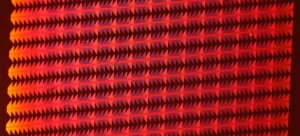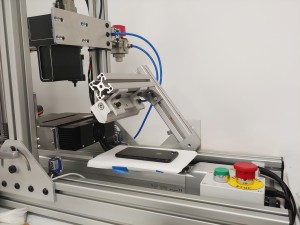
Using industry-standard manufacturing technologies, Copper nanophotonic components could enable energy-efficient light sources, ultra-sensitive sensors, high-performance optoelectronic processors, etc. Previously, nanophotonics experts had believed that only noble metals — namely silver and gold — possessed the required properties to build efficient nanophotonic metal-dielectric nanostructures. Other metals were ruled out as candidates due to their strong absorption. On the other hand, creating nanophotonic components from gold and silver is difficult and expensive as noble materials have a low tendency to enter into chemical reactions. Successfully substituting these costly materials with copper could indeed represent a game-changer for nanophotonics and the computers of the future.
Researchers at the Moscow Institute of Physics and Technology (MIPT) in Russia have for the first time demonstrated that copper nanophotonic components not only work as well in photonic devices as their silver or gold counterparts but are easily integrated in optoelectronic circuits using standard fabrication processes.
Practical use of copper nanophotonic and plasmonic components
What impact would a copper revolution in nanophotonics have on the future of light-based technologies? “Photonic and optoelecronic devices are diffraction limited,” says research leader Dmitry Fedyanin in the Laboratory of Nanooptics and Plasmonics at MIPT's Centre of Nanoscale Optoelectronics. Gold and silver offer a possibility to overcome this fundamental limitation. Unfortunately, however, gold and silver are noble metals and cannot be used in the industry-standard manufacturing process, which prevents commercial application of metal-based nanophotonics and plasmonic devices.
“We have demonstrated that copper nanoscale photonic components can outperform gold components, which opens new avenues for the industry,” reports Fedyanin. He goes on to explain that the microprocessors of the future will use light for ultrawideband communication on a chip. However, photonic components are not as easy to scale down as electronic components due to diffraction. Thus, sub-diffraction-limited nanophotonic and optoelectronic components will be needed in the near future. “We have demonstrated that copper is a good material for this task and, consequently, one can directly implement new components without any change in the manufacturing process.” This advantage is significant to manufacturers, as implementing entirely new fabrication lines and processes is extremely costly. Fedyanin believes that copper could replace gold in many photonics, optoelectronic and photovoltaic devices, where metal is used, ranging from light emitting devices to biosensors.
The discovery journey began in 2012, when Fedyanin and his colleagues were working on gold-based active plasmonic devices. “At that time, we needed accurate data for optical properties of the material in the mid-infrared spectral range,” he reflects back. “We had to generalize a lot of experimental data and theories. As a result, we managed to understand how optical properties of gold depend on the internal structure of gold polycrystalline films. Later, we applied this theory to copper and found that copper, in terms of optical properties, can be even better than gold.”
Proving the theory
Confirming their hypothesis experimentally was challenging. The difficulty was to fabricate copper films with the required internal structure and accurately measure the dielectric function of the copper. Metals reflect most of the incident light, so the expert says it is extremely difficult to achieve high precision using standard techniques, such as ellipsometry or reflection/transmission measurements, and validate the obtained results. “For this purpose, we used scanning near-field optical microscopy of the nanostructures and confirmed the results of the ellipsometry. Moreover, we fabricated and performed measurements of copper plasmonic nanostructures, and demonstrated that it is possible to achieve high properties of copper in nanophotonic components fabricated in a CMOS-compatible process, which makes the obtained results even more important for practical applications.”
Eventually, copper could edge out gold as optical material. “In contrast to gold, copper can be used in the industry-standard manufacturing processes, which opens the ways for practical implementation of metal-based nanophotonics components in commercial devices,” Fedyanin agrees.
“The next step is [to gain a] better understanding of fundamental and technological limitation and, of course, design and development of novel copper-based nanophotonic and optoelectronic components, which can be implemented in practical devices, such as microprocessors, improving their performance and energy efficiency, reducing their size and cost,” the MIPT researcher concludes.
The results have been published under the title “Ultralow-Loss CMOS Copper Plasmonic Waveguides" in the scientific journal Nano Letters.
Written by Sandra Henderson, Research Editor, Novus Light Technologies Today























 Back to Features
Back to Features




























